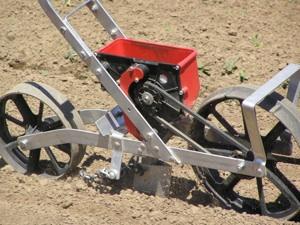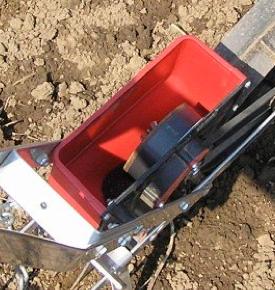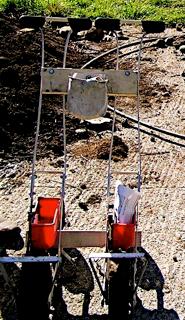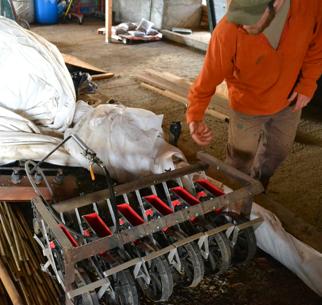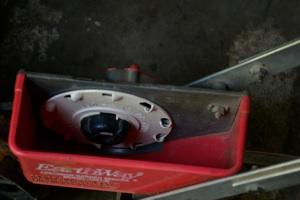Ok, so I wouldn’t buy it if you’re just seeding 10’, but if you’re seeding 10’ on a regular basis I might go for it. If you’re seeding 10,000’ of one crop on a regular basis I wouldn’t buy it either, but it will do the job, and do it decently well if you’re only doing that much once a year. Where this thing is great is in the 50’-500’ range, especially if you’re making several seed and seed plate changes during a seeding session. It’s especially suited to lighter soil. The thing is light weight, which makes it great for carrying around and easier to get the seed out of, but it doesn’t make it great for plowing through heavy clods or rocks in the soil
While I’m talking about things it’s not good at, and other problems, here a little list:
- It says precision, and the different plates do give you a bit of a range of seeding rates and kind of a bit of variation in seed spacing, but not so much. The good news is that you can play with the different plates, even modify plates or order custom plates and get a bit more variation. The most common modification I see is putting a bit of scotch tape behind every other or even every two of three holes on the beet plate to give 1/2 to 1/3 the seeding rate and reduce or eliminate the need for thinning.
- With small seeds, especially small round ones like turnips and arugula, there’s a tendency for the seed to get stuck behind the plate and cause a terrible grinding noise, not to mention it doesn’t really seed right while the seed is back there. There’s a modification that helps with this. You can take a 4” abs pipe cap (I think that’s the size), drill a hole in the center, replace the screw for the top pulley with a long one that extends into the seed hopper and then tighten that cap against the seed plate with a wing nut to keep it from flexing as much. This works pretty well, but it does make changing the seed plates a pain. The trick is getting the tension on the screw just right so that the plate still spins, but so that it doesn’t flex. The photo below kind of shows the modification.
|
|


